Bartolomeu Lourenço de Gusmão: Brazilian Aeronautics Pioneer
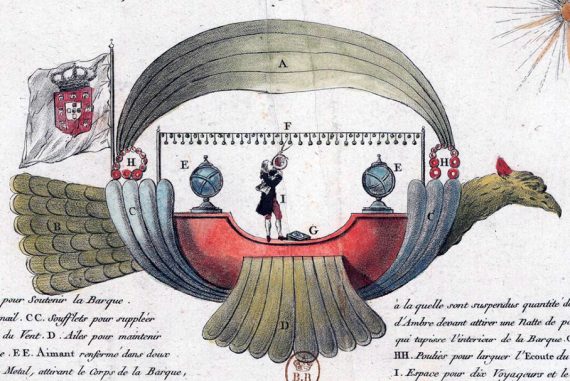
The Brazilian priest, Bartolomeu Lourenço de Gusmão, is considered the pioneer of ballooning, even though he did not build a balloon capable of taking a man to the air. In 1709, in Lisbon, Portugal, he did however show -in at least four different, documented occasions- that by placing hot air inside any bag made of light material, it would soar upwards in the sky.
His ideas were indeed advanced for that time. But he did not succeed in obtaining funds to build larger balloons due, mainly, to the intriguing in the Portuguese court and the influence of the Catholic priesthood order called the Compañía de Jesús (Society of Jesus), which had a very strong presence in a Catholic country such as Portugal. The Jesuits, as the members of the order are called to this day, did not encourage the study of Science, preferring instead to focus on Humanities. It is thus not difficult to see that in a country largely influenced by them, a scientific discovery such as the one made by Bartolomeu de Gusmão was not regarded as important as it should have been, whereas in other, non-Catholic countries, the Sciences were prevailing over the Humanities, and its courts were very interested in the scientific advances then being made. We must also consider that the presence of the Holy See’s Inquisition -in which the Jesuits played an important part- was strong in the Catholic countries and provided Rome the chance to exert its influence and power across Europe. This is thus the background against which Bartolomeu de Gusmão was to present his discovery.
De Gusmão was born in December 1685, at Vila de Santos, São Paulo, Brazil, and was one of the twelve sons and daughters of Mr. Francisco Lourenço and Mrs. Maria Alvares. He was christened “Bertholameu Lourenço” originally, but later changed his Christian name to Bartolomeu. The name “de Gusmão”, on the other hand, was appended even later, for honoring his friend and tutor, the priest Alexandre de Gusmão.
After Bartolomeu completed his initial studies in Santos, he moved to Belém Seminary, in Bahia -which had been founded precisely by Alexandre de Gusmão- in order to complete his studies in Humanities. Following the advice of his mentor, de Gusmão became affiliated to the Society of Jesus, and began his studies to become a priest. He did not, however, stay with the Jesuits; some claim that he left the Society to be free from its rigidities and to pursue his own scientific interests. Bartolomeu did, however, requested permission to become a secular priest and apparently was ordained in late 1708 or early 1709.
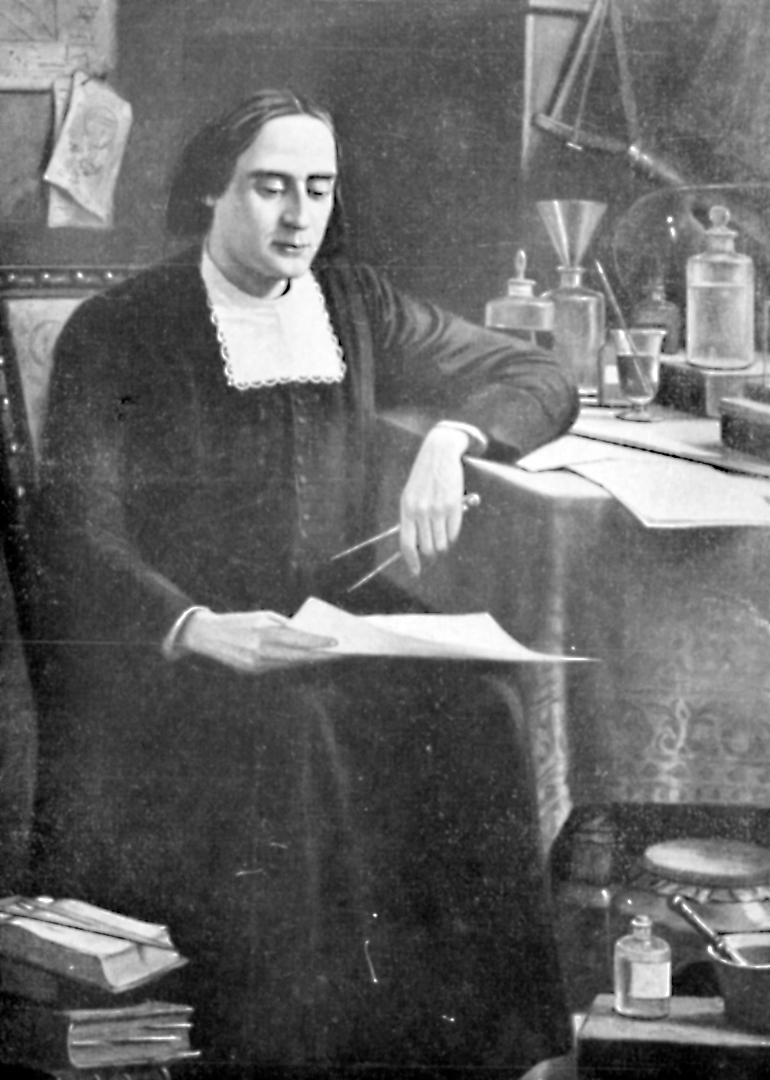
De Gusmão was a gifted man and was versed in the works of Descartes (1595-1658), Leibnitz (1610-1716), Newton (1642-1727) and of his contemporaries, Bernoulli (1667-1748) and Maclaurin (1698-1746), among others. He worked -as was usual at the time- in several fields of knowledge, including Mathematics, Physics, Astronomy, Chemistry and Philology, not forgetting his involvement in Diplomacy and Cryptography, by order of the Portuguese king, João V. He did present to the Academy of Sciences of Berlin -founded by Frederick I- a paper on the solution of exponential equations. His abilities became known in Brazil as well as in Portugal. During his stay at the Seminary, he built a system -most probably based on a windmill- to bring water to the buildings, sparing the slaves from the arduous work of carrying water up the hills. Later, he built a one-man boat propelled by the wind, which turned around a wheel with blades attached to it.
Until this day, it’s not known how de Gusmão came across the idea of using hot air to take to the air. Some authors claim that it was the simple observation of a bubble suddenly flying upwards when crossing a source of heat; others claim it was by observing how, by burning wood, small particles flew upwards. These are only assumptions, since not even Bartolomeu left any explanation with regards to it.
Another question is that of: Where did Bartolomeu tried his balloon first? Brazil? Portugal? There is a document, Códice CXII/1-18-d, Vol. IV, from the Évora Public Library (Portugal), written by Tomás Pinto Brandão, which translated reads: “His flights in Bahia, some beginning had, and that is why did not want him, the priests of the Society. There would not be any suspicion, otherwise it will be known sooner, and if, afraid of the secret, some priests expelled him from there, perhaps will welcome him here, other priests in secret.”
This sarcastic poem may have in its roots the reasons why Bartolomeu left the Society of Jesus, though it cannot be confirmed with certainty. In any case, the experiments carried out in Portugal were documented and conducted in front of an audience.
After de Gusmão was ordained, he went to Lisbon, and was introduced in the court of King João V by the Duke of Carvalhal and the Marquis of Fontes and Abrantes, two noblemen who enjoyed the King’s graces. There, he presented to the King a “Petition of Privilege“, on which he mentioned his invention of “an instrument to fly above the land and the sea” and the future uses of it: To reach the North and South Poles; to correct the maps by flying over the terrain; the cultural exchange between nations; the rescue of people in regions destroyed by natural events or in besieged towns; and the effective control of the distant dominions of the Portuguese Kingdom, by allowing a faster means of exchanging information between the King and his governors. He claimed, in his petition, to be allowed the privilege of being the only one to carry such experiments, and requested the allocation of funds to build his flying machine. He did not, however, give any details of its invention, perhaps afraid of his ideas being stolen.
It is worth mentioning how Bartolomeu envisioned the future uses of the balloon and, indeed, of aeronautics as a whole, for all that he mentioned was indeed achieved later, either by balloonists or airplane pilots. In fact, his petition to the King should be regarded as one of the great documents in the history of aeronautics.
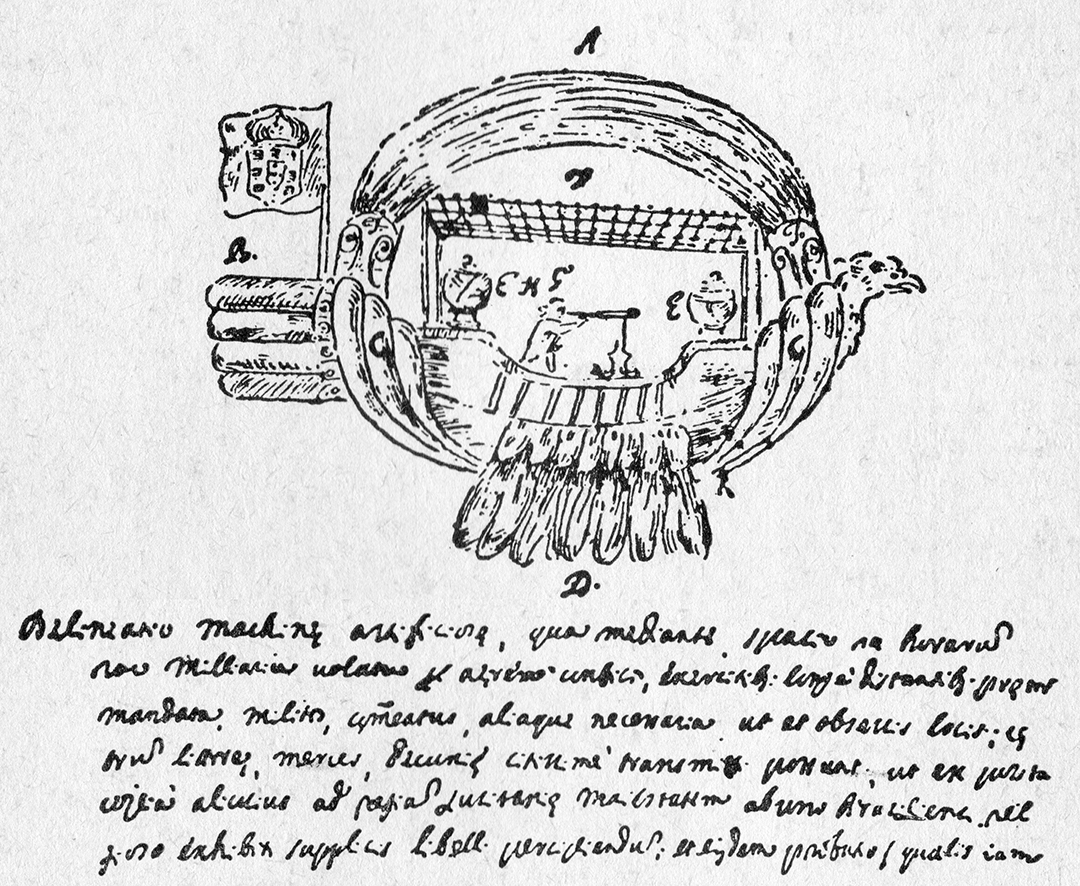
On 17 April 1709, his petition was approved by João V and Bartolomeu was appointed scholar of Mathematics at the University of Coimbra, with a sum of 600,000 Réis to allow him to pursue his invention. On 19 April, an official document was published, making public His Majesty’s decision.
De Gusmão also wrote an essay for the general public, written in simple terms, where he outlined his ideas about flying and his invention. There is mentioned, resorting to simple examples, the concept of “lift”, most important in aeronautics. His main aim was to dispel some very exaggerated ideas regarding his invention after his appointment was made public; this was expected, as the people in Lisbon were very ignorant of the scientific and technological advancements of the time, as mentioned previously.
It seems, from some letters exchanged between Rome and its representative in Portugal, Cardinal Conti (future Pope Innocent XIII) -and which should be regarded as official due to their nature- that Bartolomeu was involved in building his invention before he presented his petition to the King. Also, it is known through documents stored at the Portuguese National Library in Lisbon, that Bartolomeu was offered the residence (“quinta”) of the Duke of Aveiro to build his invention and that later, he moved to the King’s own, as it was found more suitable for the construction process.
The first experiment was scheduled for 24 June 1709 but did not take place due to the King being ill, and it was delayed until August, after he had recovered. On 3 August 1709, the first experiment took place; It did not work, since the balloon caught fire and was destroyed. The second attempt on 5 August, was successful, and a report on it, written by Salvador António Ferreira that is currently stored at the National Library, is translated as follows: “On the fifth of the same month, said priest came with a half globe of thin wood, inside of which was a globe of thick paper, with a bowl of burning material at the bottom; which flew more than 20 spans of a hand and, as the fire grew strong, the flying paper burned; and the half globe of wood was left in the ground without being lifted, because the intent was frustrated.
And as the globe was reaching the ceiling with the house two servants of the Royal House came with some sticks , to avoid any disaster, attending to all this His Majesty with the whole Royal House and several people.”
Another letter, written by Cardinal Conti to his superiors in Rome, mentions Bartolomeu’s first and second experiments and explicitly says that it had a “…corpo esferico di poco peso…” (a spherical body of little weight); that was propelled by hot air; and that it flew upwards to a height of “due canne” (approximately four meters, equivalent to 20 spans of a hand, as mentioned above). Moreover, and most important of all, Conti states that “where he, having confirmed that his invention is not endangered, is building another, larger instrument“. Thus both reports on the experiments confirm that Bartolomeu’s invention was indeed a balloon with the shape very similar to what the ones that exist today, and that indeed it lifted from the ground.
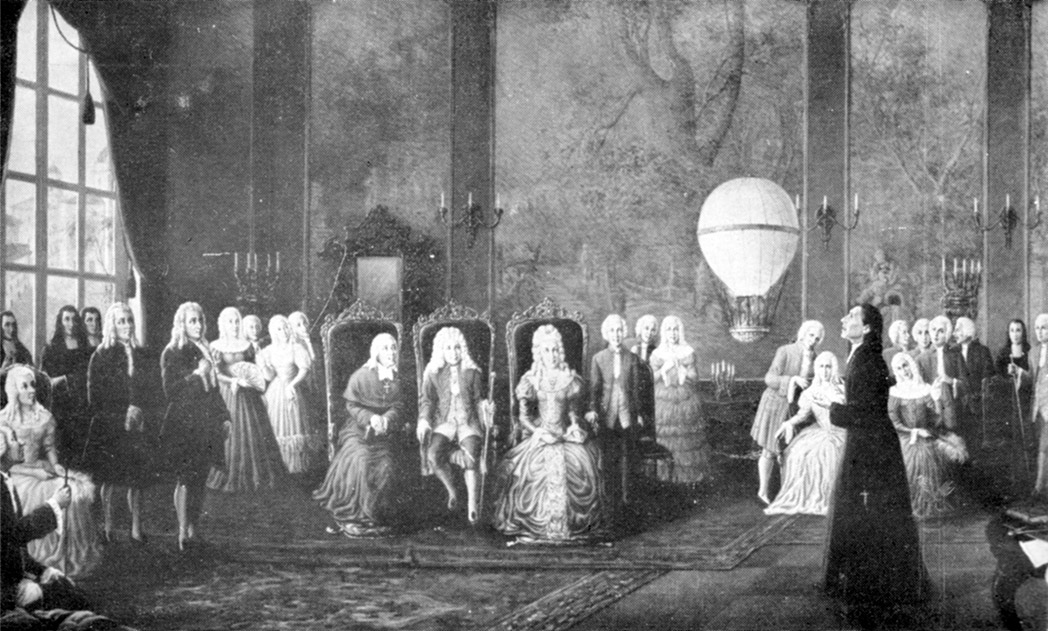
The third experiment was carried on 8 August, at the courtyard of the India House, where the balloon took to the air and fell graciously, in a nearby square. The fourth, and final, experiment was carried on 3 October 1709, and was reported by Salvador António Ferreira as: “Thursday, 3 October, made the Priest Bartolomeu de Quental, say Bartolomeu Lourenço, another test at the courtyard of the India House with the flying instrument, which having lifted to a great height took to the ground.”
However successful his experiments, which showed that it was possible to take to the air with a balloon, Bartolomeu de Gusmão was neither able to continue its development, nor to find others who would follow in his steps. It may be said that the main reason was the undue expectations placed on his experiments by the court and the people; their ignorance on the sciences made them believe that de Gusmão would indeed fly in a balloon himself, when his only intention was about showing the possibilities of his invention, in the form of a scale model, which would then attract more interest. It is rather sad that it did not work in this manner, for mankind could have had a balloon some 60 years before the Montgolfier brothers showed theirs in Paris, in 1783, and perhaps the development of aeronautics would have been made quicker.
Though the Montgolfiers achievements can not be denied, it must be said without doubt that the first documented experiences made with hot air balloons were made by Bartolomeu Lourenço de Gusmão, using the same technology that the French balloonists used half a century later.
Many who have read about Bartolomeu de Gusmão will no doubt have come across the “Passarola“, a supposed drawing of his balloon. We must recall that in 1709, Bartolomeu wrote an essay in simple terms to present the principles behind his invention to the general public. In the same year, a document appeared in print showing that drawing (a copy of which is at the Vatican Archives, Fondo Bolognetti no. 16, pp. 69-72), and it appears that from it, many copies were made. It is fair to assume that many of the newspapers articles relating his projected experiences, as they appeared in German and English speaking countries, mentioned his essay, as well as the “Passarola”. But it could not have carried a man to the air, not even take itself into the air, given the dimensions presented in the document. To further complicate the matter, in 1784 a Mr. Simão Tadeu Ferreira published his essay with the infamous drawing, and dated it as of 1774. It was later found to be a fake, as Mr. Ferreira did not own his print shop in 1774! Moreover, the text explaining that the “Passarola” supposedly functioned, had a style visibly different from that used in 1709. It was in no doubt made to look as if Bartolomeu de Gusmão had flown earlier than the Montgolfiers’. More than doing any good to the Brazilian priest, the “Passarola” was used by his detractors as a proof that he could not have flown before the French balloonists. In fact, this is not the case, since it is obvious from the reports given in 1709, after his experiences, that what de Gusmão had achieved was to demonstrate that it was possible to lift a balloon using hot air, albeit using reduced scale models.
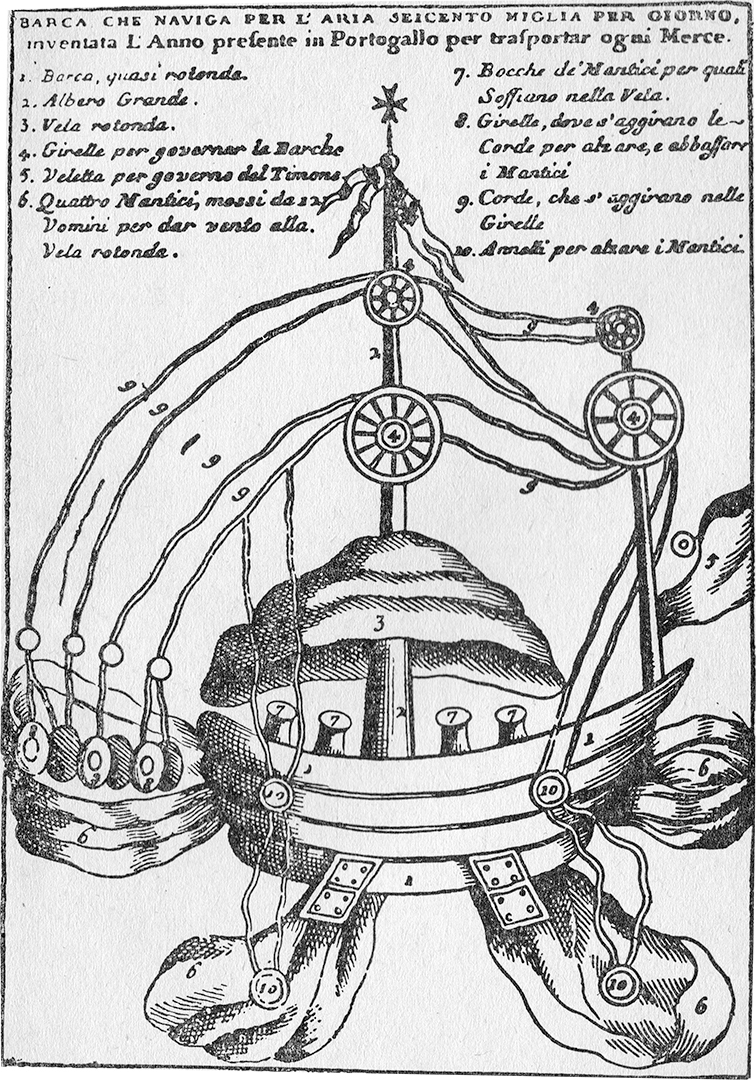
After his abrupt retirement from the balloon experiments, Bartolomeu de Gusmão still enjoyed the King’s privileges, until an intrigue in the court, which involved the King himself, brought them to and end. In September 1724, the Inquisition was told that the King was to be bewitched by some ladies who, having fallen from His Majesty’s grace, wanted to be back at the court. After the usual inquiries, the name of Bartolomeu de Gusmão surfaced as someone who wished to “stay alone” with one of those ladies. He could not stand his unfair involvement in the episode and on the night of 26 September, he fled from Lisbon towards Spain and there, on the night of 18/19 November 1724, he died at the Toledo Mercy Hospital, in complete poverty.
Bartolomeu Lourenço de Gusmão, Brazilian pioneer of Aeronautics, is buried at the Saint Roman Church, at Toledo, Spain.